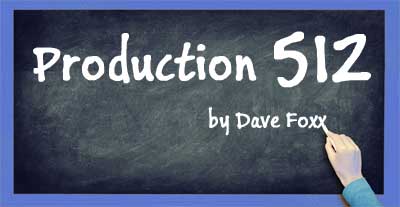 This is the 4th part of my series on the Disciplines of Production and I’m excited to present an interview with the ultimate producer of the effects we use in our work.
This is the 4th part of my series on the Disciplines of Production and I’m excited to present an interview with the ultimate producer of the effects we use in our work.
As far as my “teachable moment” goes, let me react to something I’ve been reading about online about these effects. The general message from a few producers reads something like, “Stop using all the lasers, explosions and Star Wars effects!” Umm…if that’s all people are hearing in your radio production, then there’s a much bigger problem. Effects like that are fine, notwithstanding the admonishments from the aforementioned ‘experts.’ The problem has always been that ANY effect you use should be blended into the music to add emphasis. Need a major impact at the end of a music track? BOOM. Need a quick riser to make a lyric pop out? BOOM. Just need an effect to grab attention at the open? BOOM and double-BOOM!
Effects were never meant to stand on their own. You might think it sounds really cool, but honestly, it sounds weak. The bells and whistles you get from someone like this month’s interviewee are designed to accentuate what you’re producing, NOT be the basis of the message. You know, accentuate, as in accent. Effects like this are like grace notes in music, just little extras that make the music stronger. Used judiciously, they add a tremendous amount of depth and strength to your production. When I’m producing a full blown promo or commercial, I might use two effects, usually just one. Let that be your guide. (Not a RULE!) Let the effects add gravitas to the music and ultimately, the message.
Years and years ago, I put out my own effects library that included all the effects I had created to that point during my first few years as Creative Services Director at Z100/New York. It was a single CD called Zings, Zaps and Zoodads with 109 tracks of what I considered to be pure creative genius. It included drones, impacts and risers I’d created (with the Jupiter keyboard I inherited from J.R. Nelson) which I then had twisted, flanged and chopped up with other electronic gear. This was long before re-writable CDs, so I mastered it properly on a SONY Super-Betamax and had it burned by a company outside of Philadelphia. It was so long ago that it has since disappeared into the farthest misty reaches of radio production lore, but I STILL hear bits and pieces from it in other libraries and services. Every once in a bit I’ll run across a producer who still has his or her copy.
As you will discover in this month’s video, it wasn’t too long after the release of my EPIC (ahem) library that I met someone who would change everything. Suddenly, my effort seemed pretty small, even pedestrian. This young Polish immigrant was an accomplished drummer who had toured Europe backing a jazz singer named Basia. He’d given up that life to come to America, completely broke but had a big interest in radio production. He started working at a local station in Hartford, Connecticut for a weekly salary of nothing. He just wanted to learn how to produce for radio and had enough musical and electronic sense to pull it off…in a big way.
Today, he’s one of the most successful producers I know, but he’s so much more than a radio production guy. Sure, he makes effects and music that I hear on radio stations around the world. You can also hear him every night on your favorite network and cable TV shows. You’ll hear his work every time you go to the movies. Chances are better than 50-50 that you have used his effects in your work.
This month’s video is an interview with this incredible talent. I have to say up front that even after all his time spent in the US, his accent is still very strong, but then he really speaks to the world with music and effects that are second to none.
Let me introduce you to my long-time friend, Robert Dudzic.

